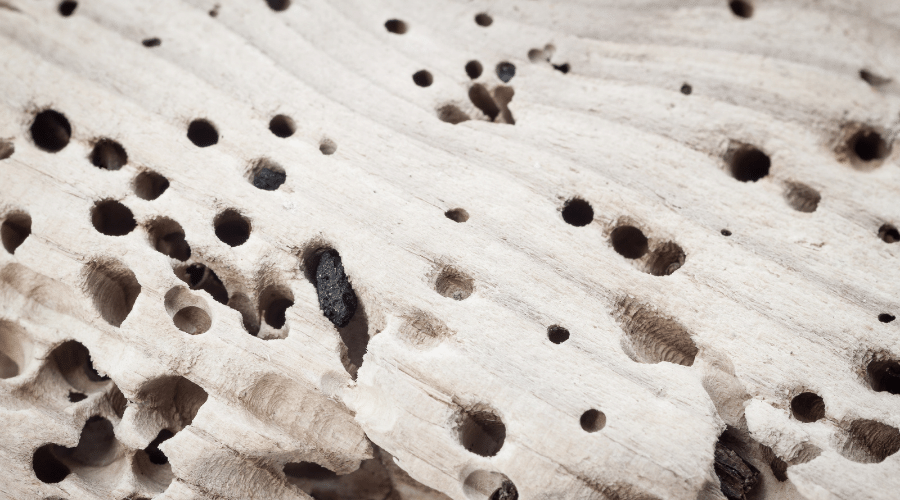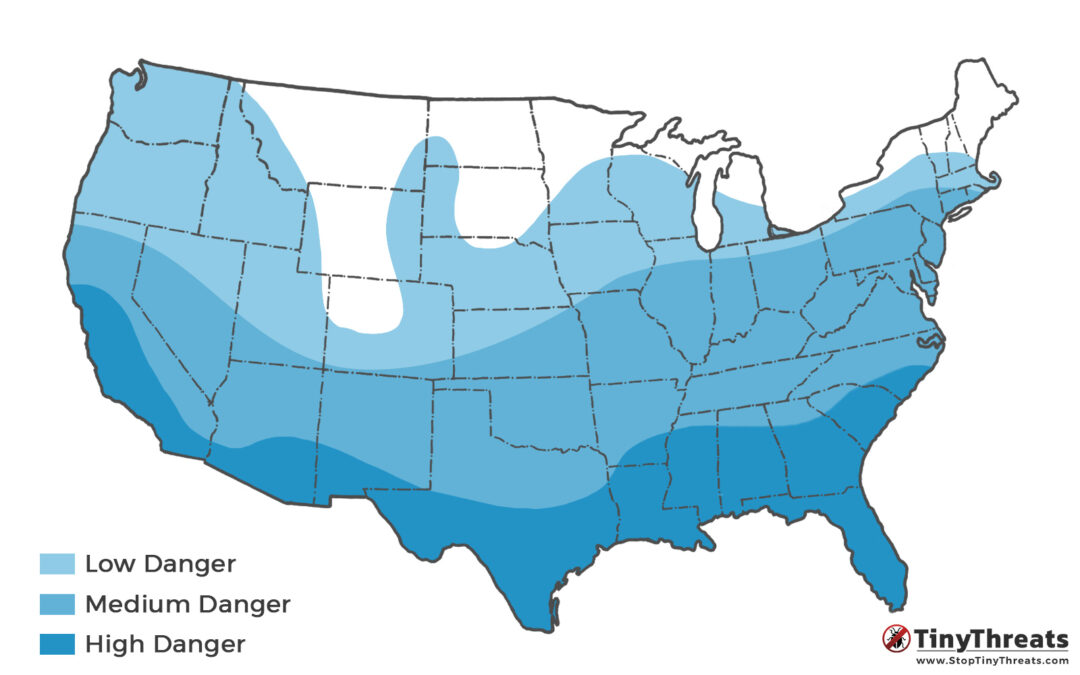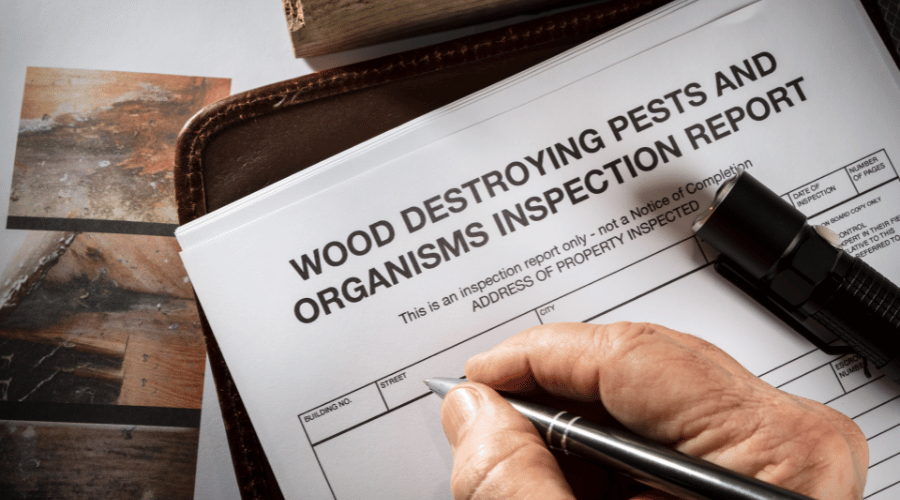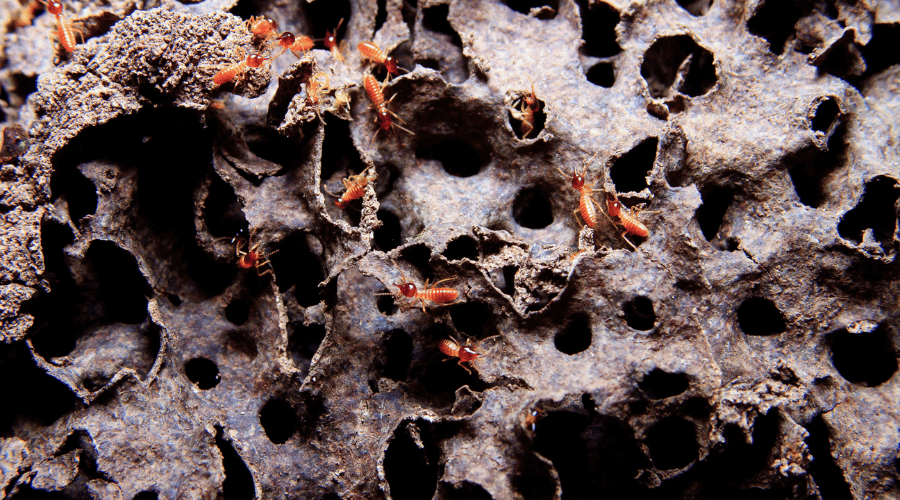One of the earliest and most common signs of termites in your walls are termite holes. These tiny holes in wood can be pinholes, exit holes, or kick-out holes. Identifying them early is the key to stopping the termite infestation before they deal significant damage!
Table of Contents
What are Termite Pinholes & Exit Holes?
Termites dig holes into woods for various reasons, creating mainly three types of holes: Pinholes, exit holes, and kick-out holes.
These termite holes are all about 1/8th of an inch in diameter (about 3mm), and may get filled with material when the insects close them again.
Note: There is no definitive naming convention, so other sites or local experts may use different names for these, or not even differentiate between the different types of holes at all.
Termite Pinholes
The earliest holes you’ll see are termite pinholes or entry holes. They can mostly be seen in late spring/early summer, and will soon be closed again by the workers that built them.
During swarm season, winged termites swarm to find a location for a new colony. When they find one, they drop the wings and dig a tunnel into the wood to start a new colony inside. These holes are usually found on the outside, or close to the termites’ entry point.
Finding these entry holes is great luck, as you can still destroy the colony very easily (with the help of an expert), preventing the termites from causing any damage to your property.
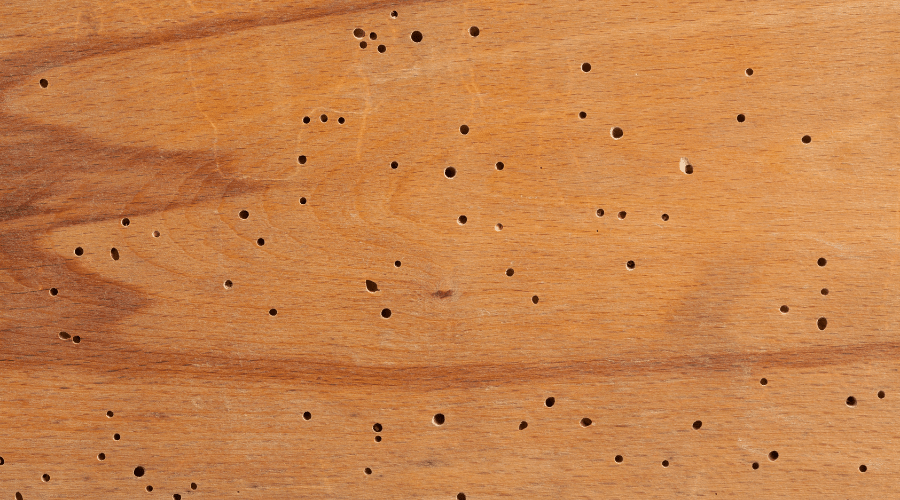
Termite Exit holes
Exit holes are the opposite of pinholes – while they may look almost identical, they are the holes built for the leaving swarmers. Before swarm season, workers will dig these tunnels to the wood’s exterior to allow the swarmer termites to leave the colony when it’s time. (More about termite swarm season – it’s important to understand!)
These holes are also sealed by worker termites once the exit holes have been used and swarm season is over. Exit holes will also be found on the outside of wooden structures, and not on interior walls.
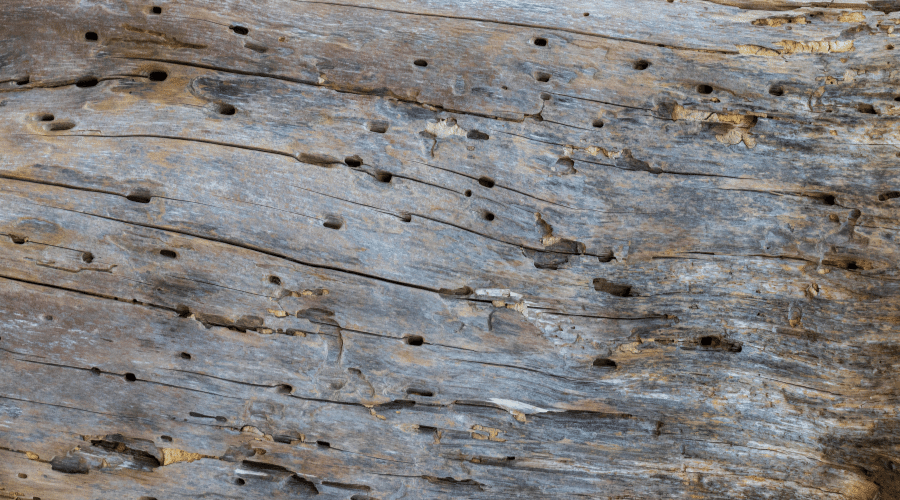
Termite Kick-out holes
Finally, kick-out holes are the ones most common on inside walls, and the only holes that will not be covered up or closed by termites after use.
Like most animals, termites produce “poop” when digesting wood, indigestible remains after they have extracted the cellulose from the wood.
This “poop” is called frass or droppings, and since they don’t want it in their colony, they throw it out through special holes: the kick-out holes you may see on your wall.
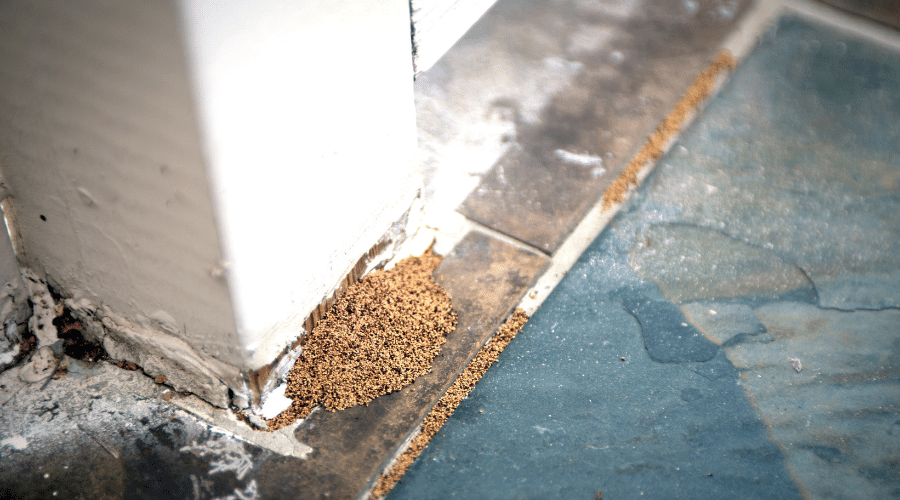
If you see piles of termite droppings, kick-out holes are somewhere above.
How to identify a termite hole
In general, holes that go deep into the wood are not natural – so if you find any holes like that in your home, there is something digging these.
Termite holes are 1/8th of an inch (3mm) large, no bigger. Anything larger than that is not from termites, but is likely made by another wood-eating beetle.
Second, termites rarely build a single tunnel to the outside. If you see their holes, you will usually see many in the same area. They are not very consistent in neither placement or direction.
Finally, especially for indoor holes, check beneath them on the ground: Since kick-out holes are for kicking out frass (droppings/poop) out of the colony, you should find small piles of droppings on the ground near these holes.
Droppings look like sawdust, but on a close-up, look like tiny, wood-colored pellets. Read our guide on identifying termite droppings.
Another option are wings: For both entry and exit holes, you will likely see discarded wings near them. Since the wings are very fragile, termites lose them when they enter these tunnels, and some may lose them upon exit, too.
So if you see a bunch of wings, about ½ to 1 inch long, below any holes in wood (mostly outdoors), they are likely termite holes.
What to do about termite holes in walls
If you find and identify termite holes in your home, you are lucky: You can stop them before they cause significant damage in your home.
The biggest danger of termites is that they can chew through the foundation of your home undetected for years, causing dangerous structural damage within years.
So the most important thing to prevent major termite damage is simply finding them early. That’s also why many pest control companies offer long-term contracts to regularly do check-ups in high-termite-risk regions.
If you find termite holes, even if you are not completely sure, get a pest control expert to do an assessment and suggest a course of action.
With termites, you really don’t want to try many DIY approaches, as they are very hard to stop without serious treatment.
Other signs of termitesFind them early
Should you cover or seal termite pinholes?
When you find termite holes, you should not cover them up or seal them. First, there’s no point: the busy worker will simply dig new holes.
Second, when you get an exterminator to take a look, they should be able to look at the undisturbed tunnels.
Finally, some treatment works by injecting various liquids into these tunnels – which is more difficult if you’ve covered them up.
Can termites make holes in concrete?
No, termites cannot make holes in concrete or dig tunnels through concrete or similar material. However, they are masters at finding cracks, and then using these to travel.
Termites are made for chewing through wood, and even though they can even bite through plastic, concrete is simply too hard for them.
Are holes the earliest signs of termites?
Termite pinholes or kick-out holes may be the earliest sign you will find, but it isn’t quite the first thing to watch out for.
During swarm season, you may see swarms of winged termites near your house. Many of these swarmers will try to find an entry point into your house, anywhere from the basement, crawlspaces, outer walls, or the attic.
Especially during and after this time, you should check for entry holes very thoroughly.
So you could say that entry holes are the first sign of a new termite colony, but winged swarmers near your house are the first sign of danger.
Do subterranean termites make holes?
Subterranean termites are unique in many ways, including that they do not make or leave any holes in the wood.
They use all material to build tunnels and structures, so they create no kick-out holes for their droppings.
They don’t have a swarm season, so they also don’t build exit holes.
And since they come from the ground, rather than from swarmers, they need no entry holes.
Instead, subterranean termites build mud tubes, also called termite trails. These tubes are built from the ground up toward wooden structures, which the workers will then dig into. Click here to learn more about identifying termite trails early, including what you should or shouldn’t do.
For subterranean termites, these mud tubes are the first sign to watch out for – and you really should watch out for them! These termites are much more dangerous than those of the drywood or dampwood species, since they can both build larger colonies and eat away at your home at greater speed.

